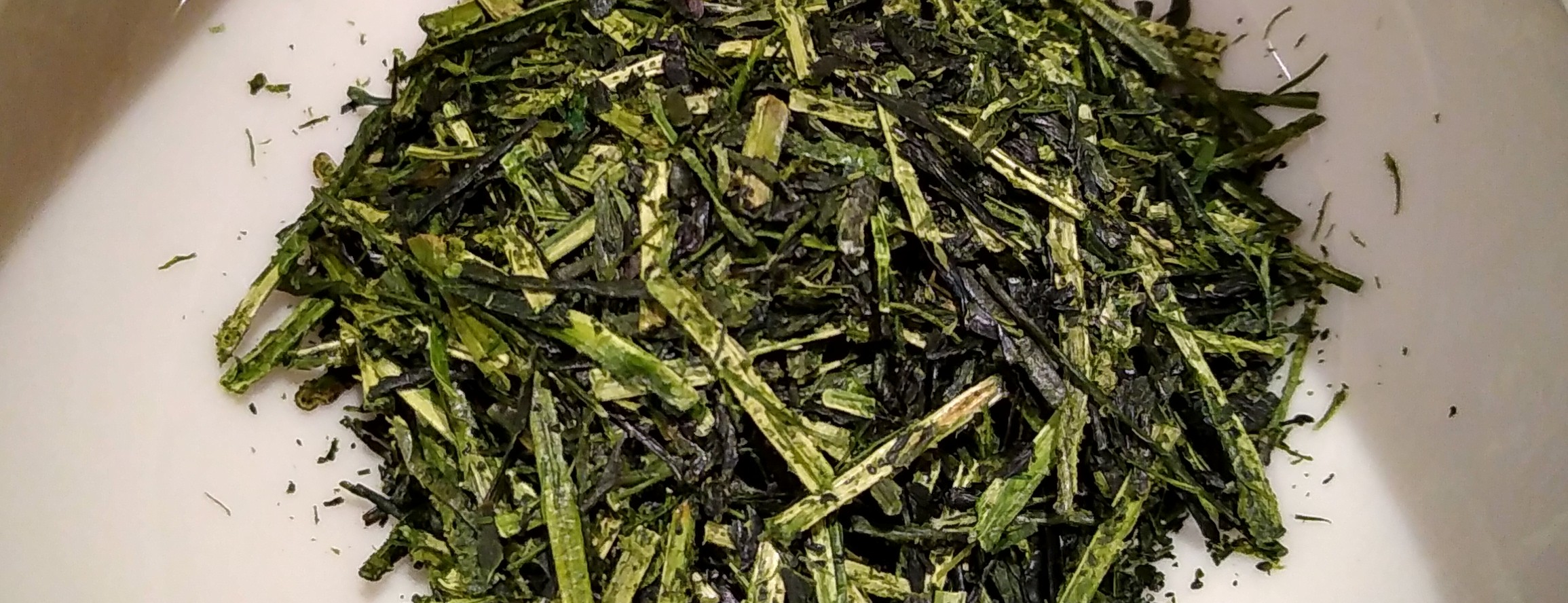It was the summer of 2014. I had decided I would be leaving Japan, possibly for good, after having lived there for over three years. I knew I wanted to try and fill any empty space in my luggage with bags of the finest tea Japan had to offer, that I could afford. I had made some contacts in the tea business while living in Osaka so when my friend Yuji offered to take me to a tea wholesaler he was working with at the time I couldn't resist. Little did I know that on this excursion I'd be introduced to a new type of Japanese green tea.
Karigane-cha(雁が音)roughly translates to wild goose call. I honestly can't find an origin story to the naming of this tea. If I find it I'll be sure to add it to this article. Regardless, it's an interesting name for an interesting tea. See, it's typically categorized as a stem tea or, in Japanese, kuki-cha(茎茶). Stem tea is generally not a high-quality, or at least high-value, product. Most people familiar with kuki-cha picture a very dark brown, sometimes almost black, pile of tea twigs and stems. That is because most of it is actually roasted before presented to the consumer. Now, don't get me wrong, I love your standard roasted kuki-cha. It's refreshing and awesome ice-cold in the summer, particularly. However, karigane-cha is truly an outlier in this category of tea.
Firstly, I argue it should barely be called a stem tea. True, a good portion of the volume comes from stems, but a good quality karigane has plenty of leaf that makes up its mass. Secondly, it is made from non-standard tea plants. You see, a small portion of the tea crop in Japan is grown to become one of two types of shade-grown teas: kabuse-cha(かぶせ茶) and gyokuro(玉露). It is from these same plants, mostly kabuse-cha I'd imagine, that high-quality karigane-cha is made. This makes its flavor profile very intense, yet somehow mellow as well with the inclusion of so many stems.
karigane-cha is truly an oddball tea I believe. Because of its categorization and the fact that it really is the remenants left after making full-leaf kabuse-cha or gyokuro it can be very reasonably priced, or outright cheap. Somehow this speaks to me and makes me love the tea even more, akin to someone trying to just get rid of their junk and not realizing how valuable it is. The flavor profile is something else as well. I don't quite know what's going on between the stems and the leaves in a good cup of karigane-cha but somehow they make a very rounded cup of green tea. And don't forget, its an umami bomb as it came from shade grown tea plants.
A quick caveat before I go. Be wary on your search for this wild goose. I've seen my fair share of questionable tea labled as karigane-cha. Now, perhaps technically it does not need to be made from shade-grown plants, and so you may find karigane made from standard plants used to make sencha. Just realize that the flavors you get may not be as deep or rewarding as from what I would consider a true karigane-cha. Also, don't pay an arm and a leg for this tea. If you see one that seems overpriced, stay away. Remember, you're buying essentially the ends of the loaf when it comes to tea, and the producer is getting most of their profit from the full-leaf tea they are making.
This article is a bit of a work in progress, and I'll probably add to it soon. I hope this has helped you get acquainted with a tea you may have not even known about or heard of. If ever in your searches for a new tea you come across a good looking karigane I hope you'll give it a try.

